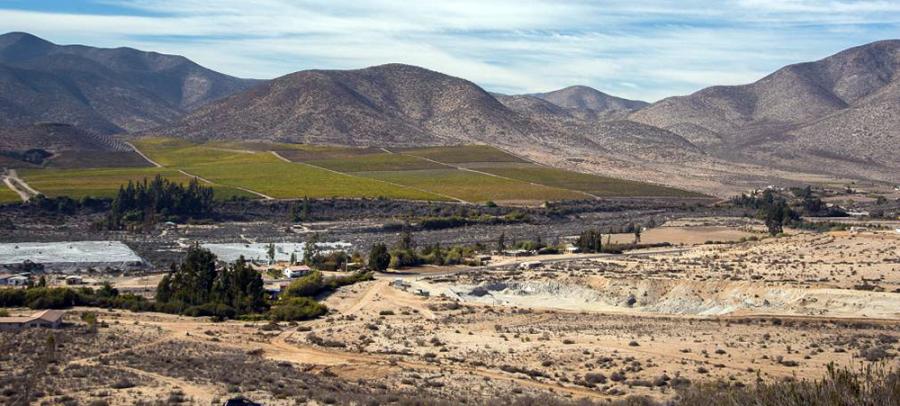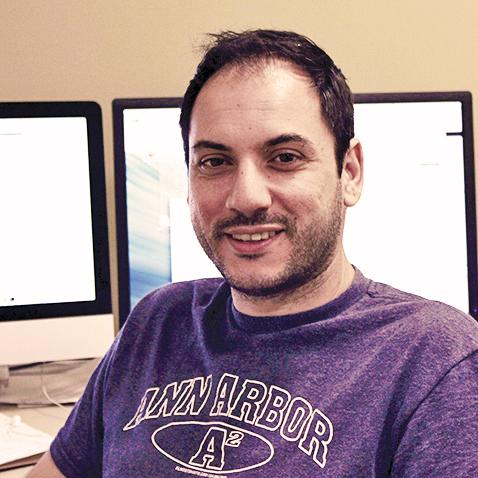
To compete or to cooperate? That is the question.
In arid regions, where communities are threatened by drastic and unpredictable environmental changes, water scarcity should pit farmer against farmer. But in the semi-desert area that lies between the Atacama Desert and the fertile agricultural valleys of central Chile, families are working to share the labors of farming and to together restore the degraded land.
Understanding how these networks of cooperation first emerged, and whether they can be sustained in the face of increasingly rapid globalization and climate change, is the impetus for Dr. Andres Baeza’s research. As a postdoctoral fellow at the National Socio-Environmental Synthesis Center (SESYNC), he is studying how ecological and economic changes influence cooperation behaviors amongst pastoral farming communities in Chile.
Below, Andres answers a few questions about his work … and a few questions just for fun.

Name: Andres Baeza
PhD: Ecology and Evolutionary Biology, University of Michigan
Hometown: Santiago, Chile
What is your field of study?
Quantitative ecology.
Can you describe the ecological component of your SESYNC research?
The region in Chile that I study used to be a forest—what they call Matorral, a semi-desert type of forest with small shrubs—that was very dense and very well adapted to the regional climate. But there have been a lot of changes there, particularly after the arrival of the Spanish, who completely altered the landscape with activities such as livestock grazing mining and agriculture. The livestock in particular ate the native bushes and facilitated the establishment of a particular invasive species called Acacia, which transitions the forest to a savanna-type environment. This transition may happen very quickly, and if you maintain the presence of these livestock animals, the transition may be irreversible.
So I’m studying the dynamics of this phenomenon over time with a spatially-explicit model to identify signals for the transition from forest to savanna. I’m combining these vegetation dynamics with livestock dynamics to then try to determine the best strategies for maintaining the forest while at the same time maintaining the livelihoods of the pastoral communities that depend upon the land.
Can you describe the social component of your SESYNC research?
Pastoral communities have shared the land within this semi-desert region for more than 100 years, and they engage in livestock and agriculture production to generate income that fluctuates depending upon factors such as rainfall and price variability. Based on past and present conditions, families make decisions for managing the livestock and agricultural land to increase gains and decrease costs. These decisions are constrained by rules for maintaining the viability of the community, including quotas of livestock that each family is allowed to have in the common area. There are also instances of cooperation between families. For example, families share both the labor and the costs associated with the farming and grazing activities.
I’m using a spatially-explicit agent-based model to study how these networks of cooperation first emerged, how they are maintained, and how they have changed over time as the land has been degraded.
What questions does using a model enable you to answer that you wouldn’t be able to otherwise?
From an ecological perspective, most of the land in central Chile has been completely depleted, and not much of the semi-desert forest remains. It’s important to protect what’s still left—the model allows me to explore different degradation scenarios without actually causing damage to the ecosystem.
From a social perspective, the various scenarios that I’m studying have real-life consequences for Chilean communities and families. I can use the model to test scenarios to see which ones are most likely to be successful, rather than manipulating and possibly jeopardize these people’s livelihoods.
What do you find most important about your research?
I think it’s important to understand the dynamics between social–environmental systems in a formal and rigorous way. When you can identify the connections that maintain vicious cycles in social–environmental systems—one example is poverty and disease—that’s when you can actually act in a meaningful and effective way. That’s when you can modify those connections to escape those vicious cycles.
The same applies to my project at SESYNC. How do we maintain over time both the social structure of these pastoral communities and the ecological sustainability of these ecosystems? Understanding the underlying connections and interactions can help us preserve both.
What do you like most about being a postdoctoral fellow at SESYNC?
Goofing with Neil [Carter, SESYNC postdoctoral fellow and my officemate].
But seriously, it’s the community and opportunities to work with other fellows and researchers at SESYNC. For example, Neil and I are working with Nick [Magliocca, SESYNC computational research fellow] to combine our expertise in modeling social and ecological dynamics to understand how the actual risk of human–carnivore conflict is influenced by social networks. The idea is to provide some insight into how we can reduce the amplification of perceived risk of conflict as compared to actual risk.
What do you think would surprise people most about your work?
I think a lot of people outside of academia think of ecology only as a field-based activity where you go outside, look at birds, and take notes. Theoretical ecology and quantitative modeling can be difficult to explain, at times to researchers in other disciplines, too.
What’s the best professional advice you’ve ever received?
Don’t let your work pile up, and never let any work that you do go unpublished. Get it off your desk and out into the world.
And now for your James Lipton moment: What’s your favorite science word?
“Significantly.”
What’s your least favorite science word?
“Heterogeneity.” Because it took me about three years to learn how to pronounce it properly, and I use it all the time.
Learn more about Andres and his work by visiting his SESYNC profile here.
The National Socio-Environmental Synthesis Center, funded through an award to the University of Maryland from the National Science Foundation, is a research center dedicated to accelerating scientific discovery at the interface of human and ecological systems. Visit us at www.sesync.org and follow us on Twitter @SESYNC.